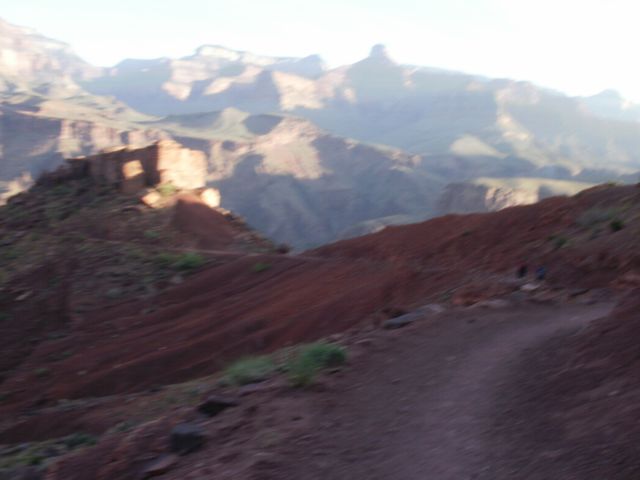by Dr. Patrick M. Nemechek, D. O.Â
Your summer headaches and dizziness might not be dehydration problems; they might be (reversible) mechanical blood flow problems. You need to understand core blood flow issues in order to stay healthy and safe during brutal summers in the desert. Â This is especially important on any Grand Canyon hike.
From June through September we live in constant heat over 100 degrees here in the Phoenix area, and inner canyon temperatures at the Grand Canyon will reach 120 + degrees factoring in the sun’s microwave effect on the rocks and the trail. Prolonged exposure to high temperatures will magnify any subtle blood pressure regulation problems that you might have developed leading to worsening oxygen levels in the brain. Inadequate oxygen to the brain will cause headaches, dizziness, nausea, as well as increased or insatiable hunger and thirst, anxiety, and fatigue.
Blood pressure medicine does not fix these problems; they are very different from hypertension (high blood pressure). Common blood pressure medications will often lower the blood pressure and oxygen delivery to the brain and thereby make headaches and dizziness symptoms worse.
Your brain needs a steady flow of blood to transport oxygen upwards into the brain, so that the brain has enough power to think and operate your body efficiently. The brain’s powerful demand for oxygen from the blood supply is regulated through the autonomic nervous system (ANS).
In a healthy nervous system, the brain gets sufficient oxygen automatically through the blood and there are no symptoms. But as we go through life, many of us unsuspectingly sustain damage to our nervous system that silently alters our blood pressure mechanism.
This damage leads to low levels of oxygen in the brain and causes the headaches, dizziness, and chronic fatigue you experience during high heat. It might be mistaken for migraine headaches because of the intense headache pain or “low blood sugar†since you feel the need to snack between meals.
It can also cause a tingling sensation in your arms or face, trigger insomnia, or cause your anxiety levels to spiral out of control.
Your brain will command you to temporarily boost blood flow to get more oxygen by eating carbs and sugar, craving salty snacks, drinking water or soda constantly, or through muscle contractions (fidgeting, nervous bouncing of your leg or foot). You lose your willpower and your ability to control these behaviors when your prehistoric brain uses these tricks for oxygen.
You will blow your diet, you will still feel bad despite drinking lots of water, and you will be so tired you can barely think straight. You might panic because your headaches and dizziness are untouched by regular painkillers or treatment.
Most of the time we are unaware when we suffer an autonomic nervous system injury. Autonomic damage does not appear on an MRI, CT Scan, or show up in our yearly blood work. I routinely screen for these types of nervous system injuries in my office. I have learned to test and pinpoint the exact damage to the nervous system, and then work to medically repair the damage and restore normal function.
Living in desert has many perks, but most people do not realize that being alerted to autonomic nervous system injuries is one of those perks. Being able to identify and reverse these types of nervous system injuries will help reduce your systematic metabolic inflammation. Reducing metabolic inflammation is critical to your long-term health because it is most effective way to reverse the onset or progression of life-ending disease.
Don’t be miserable during the summer months or on a hike, and do not ignore these early warning signs. Call my office at 623-208-4226 and make an appointment to undergo autonomic testing and renew your health.  www.DrBuckeye.com
© 2014. Dr. Patrick Nemechek. All Rights Reserved.
© 2014. Dr. Patrick Nemechek. All Rights Reserved.

